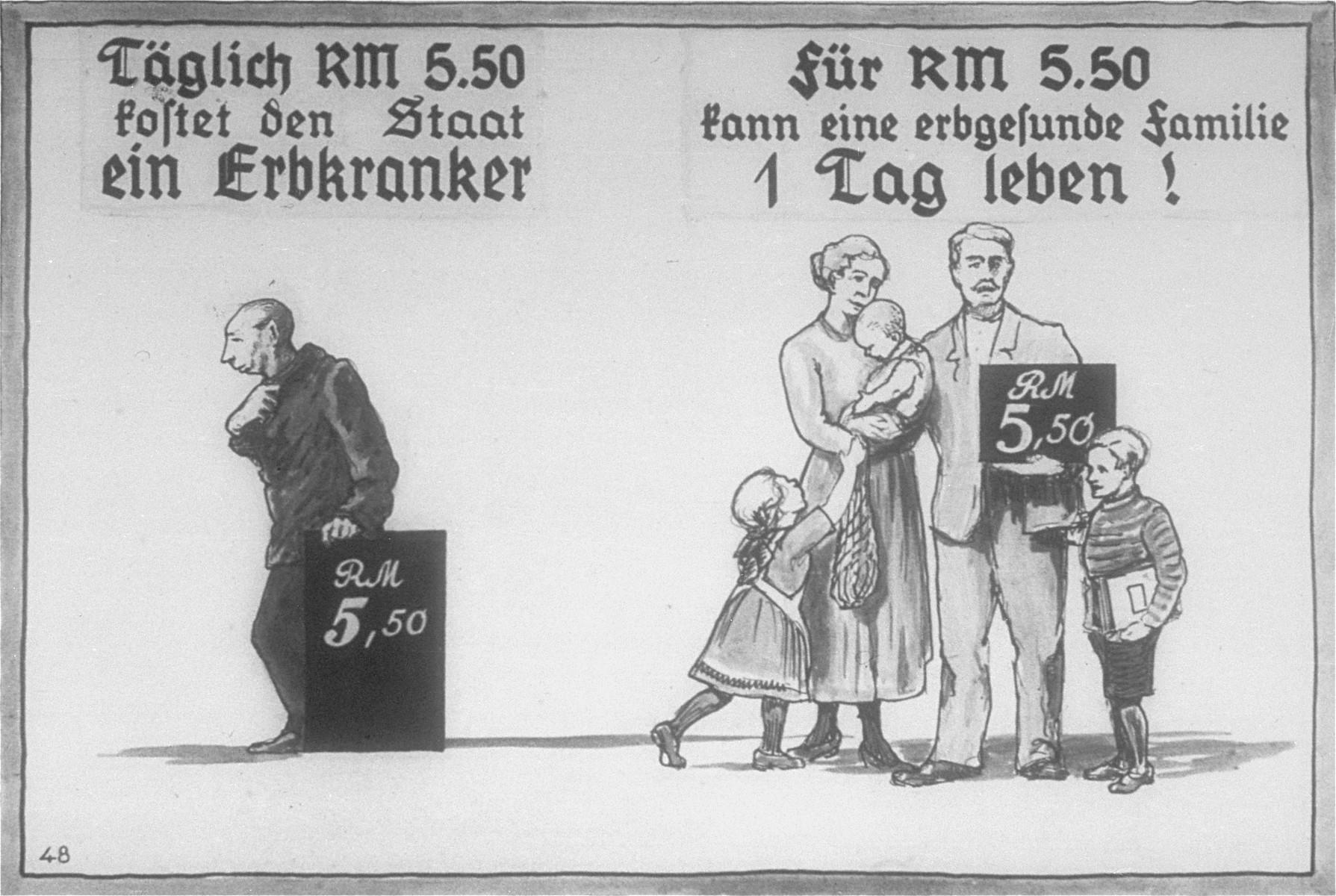
German Law Authorizes Sterilization for Prevention of Hereditary Diseases
On July 14, 1933, Germany declared a new law that authorized forced sterilization of certain people with mental or physical disabilities or illnesses.
View newspaper articlesSoon after Hitler took power, the Nazis fulfilled long-held aspirations of eugenics proponents. Eugenicists believed the human race could be improved by controlled breeding. In an effort to further the Nazi vision of a biologically "pure" population and to create an "Aryan master race," on July 14, 1933, the German government promulgated the “Law for the Prevention of Progeny with Hereditary Diseases” (Gesetz zur Verhütung erbkranken Nachwuchses). This law mandated the forced sterilization of certain individuals with physical and mental disabilities or mental illness. Individuals who were subject to the law were those men and women who “suffered” from any of nine conditions: hereditary feeblemindedness, schizophrenia, manic-depressive (or bi-polar) disorder, hereditary epilepsy, Huntington’s chorea (a fatal form of dementia), genetic blindness, deafness, severe hereditary physical deformity, and chronic alcoholism. The law also allowed public health officials to apply the law to those, like Roma (Gypsies) and “asocial elements” who were seen to reject German social values.
Special hereditary health courts lent an aura of due process to the sterilization measure, but the decision to sterilize was generally routine. Nearly all better-known geneticists, psychiatrists, and anthropologists sat on such courts at one time or another, mandating the sterilizations of an estimated 400,000 Germans. Vasectomy was the usual sterilization method for men, and for women, tubal ligation, an invasive procedure that resulted in the deaths of hundreds of women.
Within Germany, only the Roman Catholic Church opposed the sterilization program consistently; most German Protestant churches accepted and often cooperated with the policy. International reaction to the German sterilization law varied. In the United States, some newspaper editors noted the mass scale of the policy and feared that “Hitlerites” would apply the law to Jews and political opponents. In contrast, American eugenicists viewed the law as the logical development of earlier thinking by Germany’s “best specialists” and not as “the hasty improvisation of the Hitler regime.”
Prior to the 1930s, the United States had led the world in forced sterilizations. Between 1907 and 1939, more than 30,000 people in twenty-nine states were sterilized, many of them unknowingly or against their will, while they were incarcerated in prisons or institutions for the mentally ill. However, no nation carried sterilization as far as Hitler's Germany. German forced sterilizations began in January 1934, and altogether an estimated 400,000 people were sterilized under the law.
Learn More about this Historical Event
Bibliography
Aly, Götz, Peter Chroust, and Christian Pross. Cleansing the Fatherland: Nazi Medicine and Racial Hygiene. Baltimore, MD: Johns Hopkins University Press, 1994.
Bryant, Michael S. Confronting the "Good Death": Nazi Euthanasia on Trial, 1945-1953. Boulder: University Press of Colorado, 2005.
Burleigh, Michael. Death and Deliverance: "Euthanasia" in Germany c. 1900-1945. Cambridge: Cambridge University Press, 1994.
Burleigh, Michael, and Wolfang Wippermann. The Racial State: Germany, 1933-1945. Cambridge: Cambridge University Press, 1991.
Caplan, Arthur L., editor. When Medicine Went Mad: Bioethics and the Holocaust. Totowa, NJ: Humana Press, 1992.
Friedlander, Henry. The Origins of Nazi Genocide: From Euthanasia to the Final Solution. Chapel Hill: University of North Carolina Press, 1995.
Gallagher, Hugh Gregory. By Trust Betrayed: Patients, Physicians, and the License to Kill in the Third Reich. Arlington, VA: Vandamere Press, 1995.
Kühl, Stefan. The Nazi Connection: Eugenics, American Racism, and German National Socialism. New York: Oxford University Press, 2002.
Search tips
These dates and keywords are associated with this historical event.